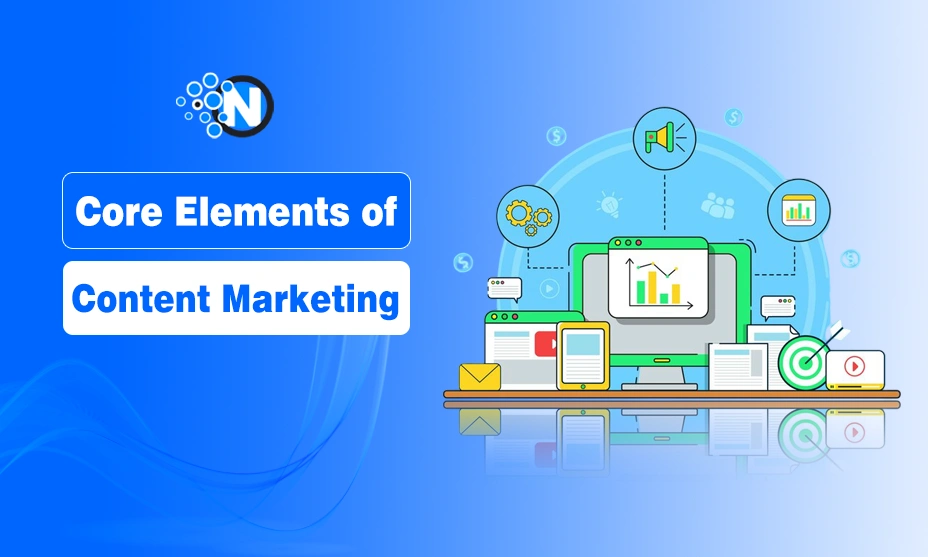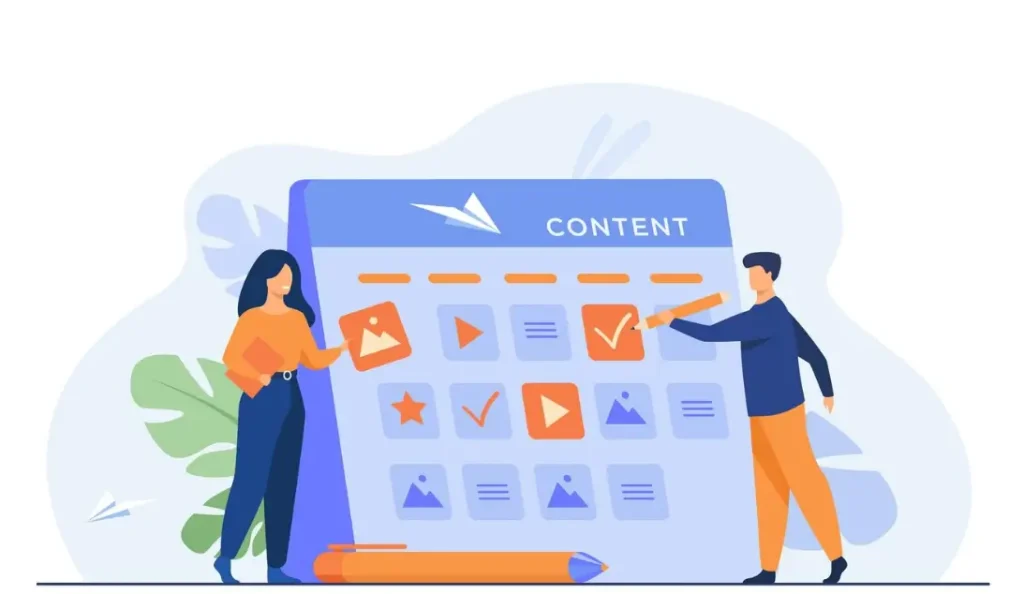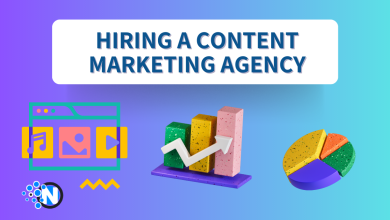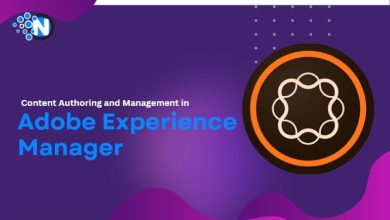Top 10 Core Elements of Content Marketing

When it comes to growing an online presence, content marketing is your most reliable tool. I’ve seen firsthand how the right content can attract, engage, and convert audiences like nothing else. But here is the thing – you have to focus on the core elements of content marketing, as successful content marketing is not just about writing blog posts.
It is a full ecosystem made up of key elements that work together. If even one of them is missing, the whole strategy can fall apart. So, let me walk you through the top 10 core elements of content marketing that I believe every marketer, blogger, or business owner should understand and implement.
What is Content Marketing?
Start creating Verdict in seconds, and convert more of your visitors into leads.
Content marketing is a comprehensive procedure of creating and distributing valuable and relevant content over different platforms to engage the audience and retain them for long-term advantages.
Such marketing aims to attract potential buyers and inform them about the features of the products or services. After building trust with them, you can easily receive the sale and generate revenue.
Content marketing generally involves the creation of content like blog posts, videos, and social media descriptions and posts to meet the client’s specific requirements.
Additionally, you should make it engaging and captivating so that the users consider you an authentic brand or a trustworthy source of information.

Core Elements of Content Marketing
Start creating Verdict in seconds, and convert more of your visitors into leads.
The following are the primary or core elements of content marketing. You should learn about them to make sure you can grab the potential advantages in this fast-paced environment.
1. Clear Content Marketing Goals
If you are not sure what you want from your content, you are already one step behind. Setting clear goals helps steer every part of your content strategy in the right direction. Without goals, you might find yourself producing tons of content that doesn’t lead anywhere meaningful.
Why Goals Matter
I always say this – without goals, you are publishing content into the void. Goals give your strategy structure and purpose. They help you define success and allow you to track whether your content efforts are actually working.
Are you trying to drive traffic? Generate leads? Educate your audience? Boost brand awareness? Your content goals influence the kind of topics you cover, the platforms you publish on, the tone you use, and even how you measure performance.
Tips for Setting Content Goals
- Use the SMART framework: Make sure your goals are Specific, Measurable, Achievable, Relevant, and Time-bound. “Increase organic traffic by 30% in the next 3 months” is way more actionable than “get more visitors.”
- Align with business objectives: Your content strategy should support broader business goals like revenue growth, customer acquisition, or brand positioning.
- Set micro and macro goals: For example, micro goals could be getting 10 new email subscribers per week, while macro goals might involve doubling your blog traffic in six months.
2. Understanding Your Target Audience
To create valuable content, you need to know who you are talking to. This part is non-negotiable. If you are not tuned in to what your audience needs or how they behave, your content won’t land – it will just float around with no one paying attention.
Audience Research is Crucial
I have learned that guessing does not work in marketing. You have to dig deep into who your audience is, what keeps them up at night, what motivates them to take action, and how they prefer to consume content.
When you understand your audience on this level, your content stops being fluff and starts being a solution. It starts conversations, gets shared and builds loyalty.
How to Understand Your Audience?
- Create detailed buyer personas: Go beyond demographics. Include goals, challenges, content preferences, and decision-making behaviors.
- Use tools like Google Analytics, Facebook Insights, and surveys: These help you see who’s interacting with your content and what they care about.
- Monitor communities where your audience hangs out: Forums, Reddit threads, Facebook groups, or even YouTube comment sections can give you unfiltered insights into their world.
3. Strong Brand Voice and Messaging
Your brand voice is your identity in words. It is how people recognize you, trust you, and remember you. Without a defined voice, your content might feel all over the place, and that confuses your audience more than it connects with them.
What Makes a Strong Brand Voice
Think of your brand like a person. That person should have a consistent way of speaking and behaving. Are you witty and casual like Wendy’s Twitter account? Or calm and professional like an investment firm?
Your brand voice should reflect your values, your mission, and most importantly, your audience’s expectations. When your voice is clear and consistent, your message becomes powerful and trustworthy.
Tips for Developing Brand Messaging
- Define your core values: What do you stand for? Let that guide how you speak.
- Document tone guidelines: Create a simple voice chart that shows what your brand sounds like – and what it doesn’t.
- Be authentic: Your audience can smell fake from a mile away. Speak like a real person, not like a corporate press release.
4. SEO Optimization
This one is huge. If your content is not optimized, it might as well be invisible on search engines. SEO is what helps people find your content when they’re actively looking for something you offer.
Why SEO is Essential?
I can’t stress this enough – great content won’t rank unless it’s discoverable. And what’s the point of creating something valuable if no one sees it? SEO ensures your content reaches the right people at the right time. It is not about stuffing in keywords or gaming algorithms.
It is about genuinely answering questions and solving problems while following technical best practices that help Google understand your content.
Key SEO Tactics
- Do keyword research before creating content: Use tools like Ahrefs, Ubersuggest, or SEMrush to find what your audience is actually searching for.
- Optimize metadata: Your title tags, URLs, and meta descriptions should include relevant keywords and be compelling enough to encourage clicks.
- Use internal linking: This helps with user navigation and improves crawlability, while also boosting authority for related content.
- Improve user experience: Fast load times, mobile responsiveness, and clear formatting all play a big role in rankings.
5. High-Quality and Valuable Content
The heart of content marketing is content itself. But not just any content – it has to be high-quality, original, and valuable. In a world overloaded with mediocre posts, quality is your edge.
What Makes Content “Valuable”
Whenever I write something, besides following the latest content writing trends, I ask myself: Does this solve a real problem? Does it answer a specific question? Does it offer something fresh that others haven’t?
If it checks those boxes, it is valuable. Valuable content makes the reader think, act, or feel something. It is not just informative; it is transformative.
Key Characteristics of Valuable Content
✅Solves a specific problem or answers a common question
✅Includes real examples, data, or step-by-step instructions
✅Is easy to consume, scannable, and well-formatted
✅Has a clear takeaway or call to action
✅Feels personal and speaks directly to the reader
6. Content Distribution Strategy
Creating content is only half the job. Getting it in front of the right eyes is the other half and is one of the important elements of content marketing. Without a distribution plan, even your best content can fall flat.
Why Distribution Matters?
You can write the best blog post in the world, but if no one sees it, it won’t move the needle. And you know what? Organic reach on social media isn’t what it used to be.
That’s why you need a multi-channel distribution plan to give your content the momentum it deserves.
Effective Distribution Channels
- Email newsletters: These go directly to people who’ve already expressed interest through email marketing. It’s your highest-converting audience.
- Social media platforms: Customize your message for each channel. What works on LinkedIn probably won’t fly on TikTok.
- Influencer or partner collaborations: Share your content with new audiences through partnerships or guest posts.
- Republish or syndicate your work: Sites like Medium or industry publications can expand your reach further.
7. Consistency and Content Calendar
One viral post won’t build a brand. Consistency will. And to stay consistent, you need a solid content calendar. A scattered publishing schedule sends the wrong message – that you are not committed or reliable.
The Power of Being Consistent
People trust brands that show up regularly. When I started publishing consistently, my audience grew faster, my traffic was more stable, and I saw more engagement across the board. Consistency builds momentum, and momentum leads to long-term results.
How to Maintain Consistency
- Plan content at least one month in advance: This removes the last-minute panic of “what should I post today?”
- Batch content production: Work on multiple pieces in one sitting to stay efficient and focused.
- Use content planning tools: Trello, Notion, Airtable, or even Google Sheets can help you stay organized.
8. Content Formats and Variety
People consume content in different ways. Some read blogs, others prefer video, and some want something visual like infographics. The more formats you offer, the more people you can reach and retain.
Why Format Variety Matters?
If I only wrote articles, I would miss out on entire audience segments who prefer short videos or podcast episodes. Offering content in multiple formats allows your message to travel farther and make a bigger impact. Plus, it keeps things fresh for you and your team, too.
Popular Content Formats to Explore
✅Long-form blog posts for SEO and deep insights
✅Infographics for visual learners and quick explanations
✅Podcasts for on-the-go content consumption
✅Short videos for social media traction
✅Webinars and live streams for real-time engagement
✅Downloadables like checklists or guides to capture leads
9. Analytics and Performance Tracking
You can’t improve what you don’t measure. Analytics give you the data you need to tweak, test, and evolve your content strategy.
The Role of Analytics
I don’t rely on guesses or gut feelings. I look at the numbers. If the bounce rate is high, maybe the content is not relevant or engaging. If traffic is growing but conversions are flat, something is missing in the call to action. Analytics tools help you make smarter, more confident decisions.
Tools for Tracking Performance
- Google Analytics: For user behavior, traffic sources, and conversions
- Ahrefs or SEMrush: For keyword rankings, backlinks, and content gaps
- Hotjar or Crazy Egg: For heatmaps and session recordings
- Social platform insights: Track engagement and reach metrics natively
10. Repurposing and Content Recycling
Smart marketers do not always create something new. They squeeze every drop out of what they already have. Repurposing content gives you more visibility without reinventing the wheel.
Why Repurposing Works
Creating content takes time and energy. So why let a great blog post die after its first week? By turning it into multiple formats, you extend its life and reach new audiences.
I always repurpose top-performing content into carousels, videos, and lead magnets – it is just a smart way to maximize ROI.
Ways to Repurpose Content
- Turn blog posts into LinkedIn or Instagram carousels
- Record a video summarizing a popular article
- Create an email series from an existing guide
- Compile related posts into an ebook or PDF download
- Pull quotes or stats for tweet threads or Pinterest graphics
Final Thoughts
Start creating Verdict in seconds, and convert more of your visitors into leads.
These are the details about the core elements of content marketing. At the end of the day, content marketing is about showing up with purpose, clarity, and value. These ten core elements are not just ideas on a checklist – they are foundational pieces that build trust, drive engagement, and ultimately lead to growth.
If you are serious about making content work for your brand, start refining these areas today. I promise, even small changes can lead to big wins. Now that you know what works, it is time to put it all into action. Keep learning, stay consistent, and always keep your audience front and center.




